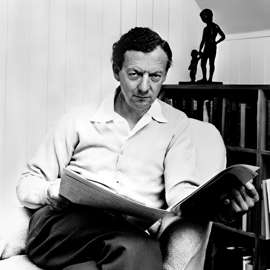- Townsville-Gurambilbarra
- Joseph Hu
- Weihnachtsoratorium
- Paul Daniel
- William Steinberg
- Ulysses Arts
- Brian Manker
- Jay Anthony Gach: HaShir HaShem Luchem
Excellent Talent on Show
FRANCES FORBES-CARBINES is moved by the singing and the theatricality of English National Opera's production of 'Mary, Queen of Scots'
I've worked out how opera as an artform can fund itself in future: opera productions can be sponsored by clothing firms like North Face and Mountain Warehouse. At Mary, Queen of Scots at the English National Opera (ENO) last weekend, all the characters were in modern dress and, for the most part, sporting puffer jackets from these two titans of outdoor vestments. While Mary Queen of Scots dances in the finale of Act I in the court ball staged for her by the Italian David Riccio, she wears a very conspicuously branded modern puffer coat; her lover-to-be, Lord Darnley, bumps and grinds her while wearing a white ski jacket. Let the companies who make these coats fund operas in modern dress - they're getting free advertising as it is.
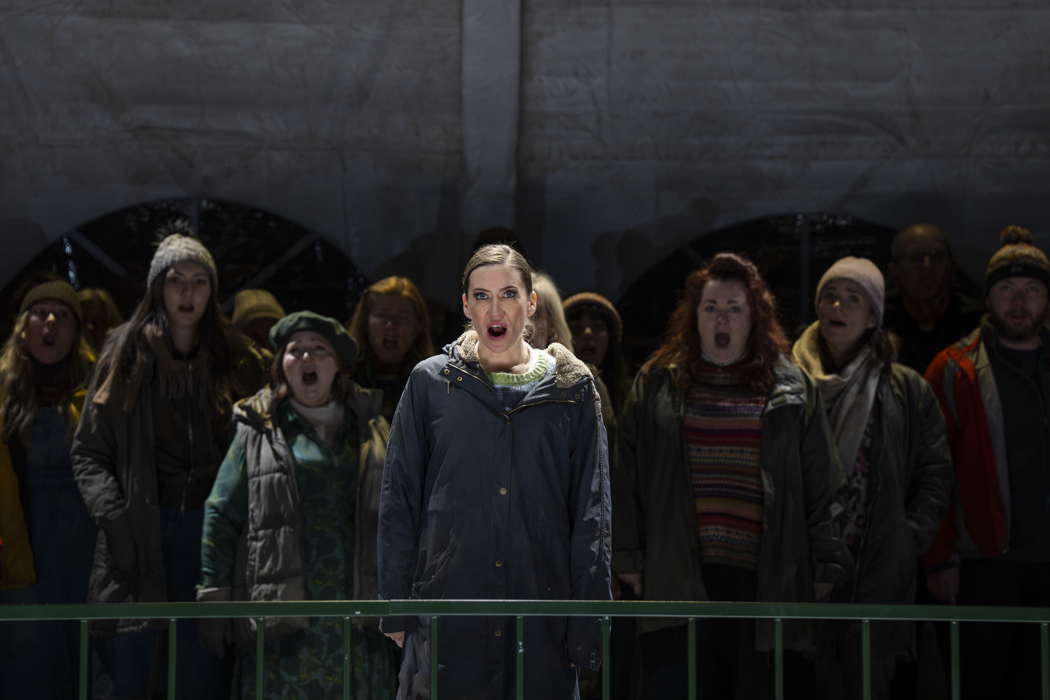
Members of the cast of ENO's Mary, Queen of Scots with Heidi Stober (centre) in the title role.
Photo © 2025 Ellie Kurttz
Mary, Queen of Scots (1542-1587), daughter of Mary of Guise and James V of Scotland, was a fiercely devoted Catholic who moved from Scotland to France when she was five years old, engaged to the Dauphin, in order to ensure her safety during the Rough Wooing, the eight years' war (1543-51) that formed part of the Anglo-Scottish Wars of the sixteenth century. At sixteen, Mary would become the Queen Consort of France beside Francis II, until shortly after her eighteenth birthday when she was widowed: Francis died on 5 December 1560 in Orléans, Loiret, from an ear condition. Multiple diseases have been suggested as the cause of it, such as mastoiditis, meningitis, or otitis exacerbated into an abscess, but the pathology remains unknown. Mary then returned to Scotland, seeking to rule a Protestant nation as a Catholic monarch in a period of deep divisions and ubiquitous turmoil.
It is these deep divisions and ubiquitous turmoil that fuel the drama of Mary, Queen of Scots: the action is fast-paced, with scenes cutting from year to year and a very short second act. The work, by Scottish-American composer Thea Musgrave who is much celebrated in the UK, appointed CBE in the 2002 Queen's New Years Honours and recipient of the Queen's Medal for Music, premiered in 1977.
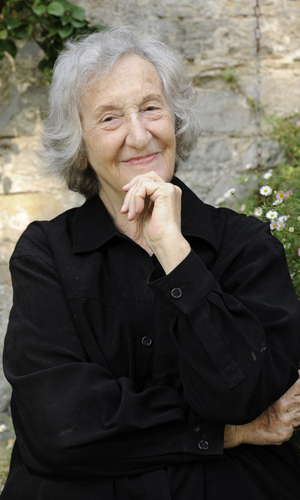
Thea Musgrave. Photo © Kate Mount
A striking scene is when Mary initially arrives in Scotland onshore by moonlight: she and her coterie make their way gingerly across the stage, looking every bit the glamorous entourage in their dark sunglasses, puffer coats and chrome suitcases.
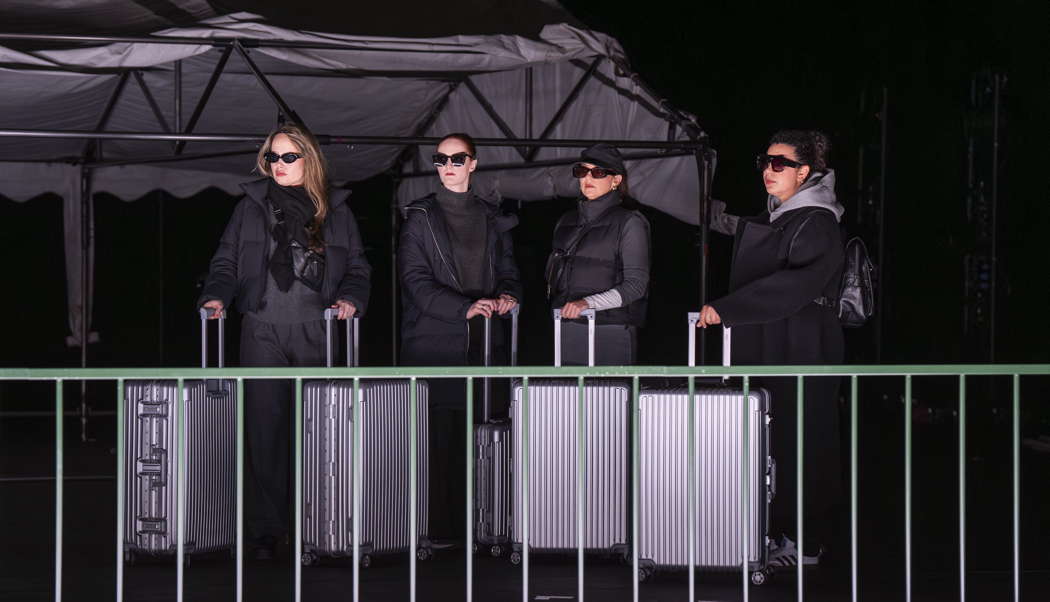
Siân Griffiths, Jenny Stafford, Monica McGhee and Felicity Buckland as the ladies in waiting in ENO's Mary, Queen of Scots. Photo © 2025 Ellie Kurttz
A cor anglais solo accompanies Mary's arrival and marks the first occurrence of the Scottish folk song 'Earl of Moray'. Lighting is used to good effect within this production (props to D M Wood): scenery is kept to a bare minimum, with the only onstage furniture being a large rectangular marquee that is rotated, illuminated from within and finally dismantled. I found this a great shame if I'm totally honest: the setting of the piece should allow for sumptuous wall paneling, Scottish castle grounds with topiary and rose gardens, shipyards with cobbled streets - it is an impoverished affair to have only this marquee.

The cast of ENO's Mary, Queen of Scots. Photo © 2025 Ellie Kurttz
In the same vein, it is sad to have it in modern dress. It doesn't make sense. Mary's arias about being indeed able to reign alone as a woman don't hit as hard in 2025 - of course a woman can reign - as they would do in their sixteenth century context. Also, while lords Darnley and Bothwell pull guns on each other they sing of drawing their 'swords' - this is just silly.

The cast of ENO's Mary, Queen of Scots. Photo © 2025 Ellie Kurttz
American soprano Heidi Stober was in very good voice and spectacular as the titular role of Mary, bringing Musgrave's musical expression to life and known for her 'formidable' (Financial Times) stage presence. She was accompanied by two former ENO Harewood artists, internationally renowned British tenor John Findon as Earl of Bothwell - Mary's erstwhile lover - and British baritone Alex Otterburn as Mary's half-brother, James Stewart.
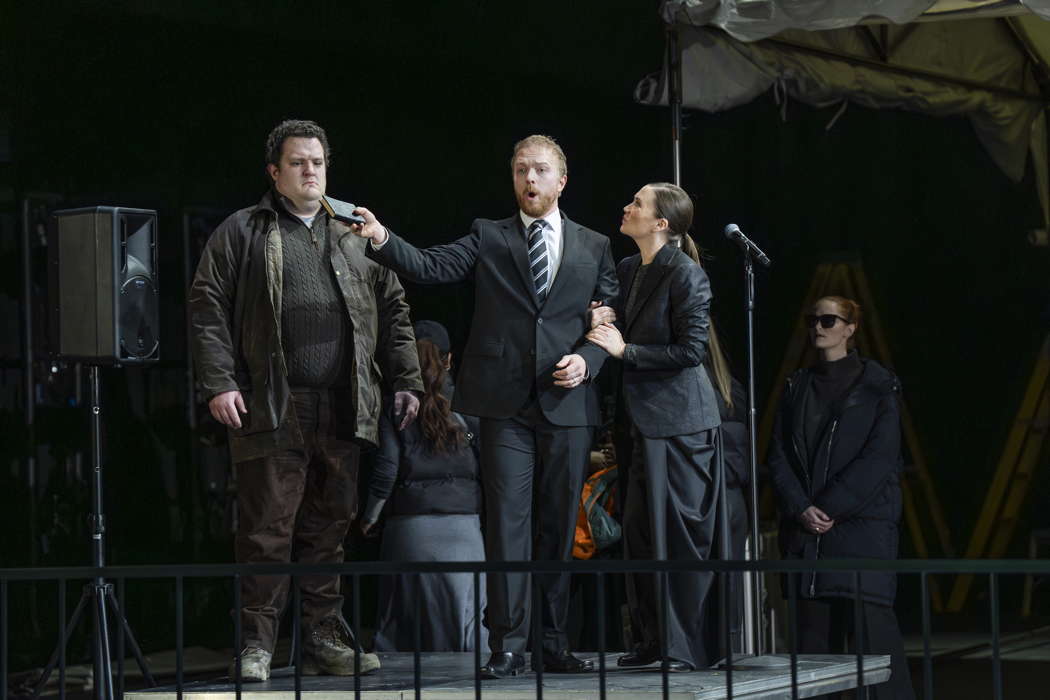
From left to right: John Findon, Alex Otterburn and Heidi Stober in ENO's Mary, Queen of Scots. Photo © 2025 Ellie Kurttz
English tenor Rupert Charlesworth was excellent as Lord Darnley, Mary's second husband, returning to the ENO after playing Tamino in The Magic Flute (2019).
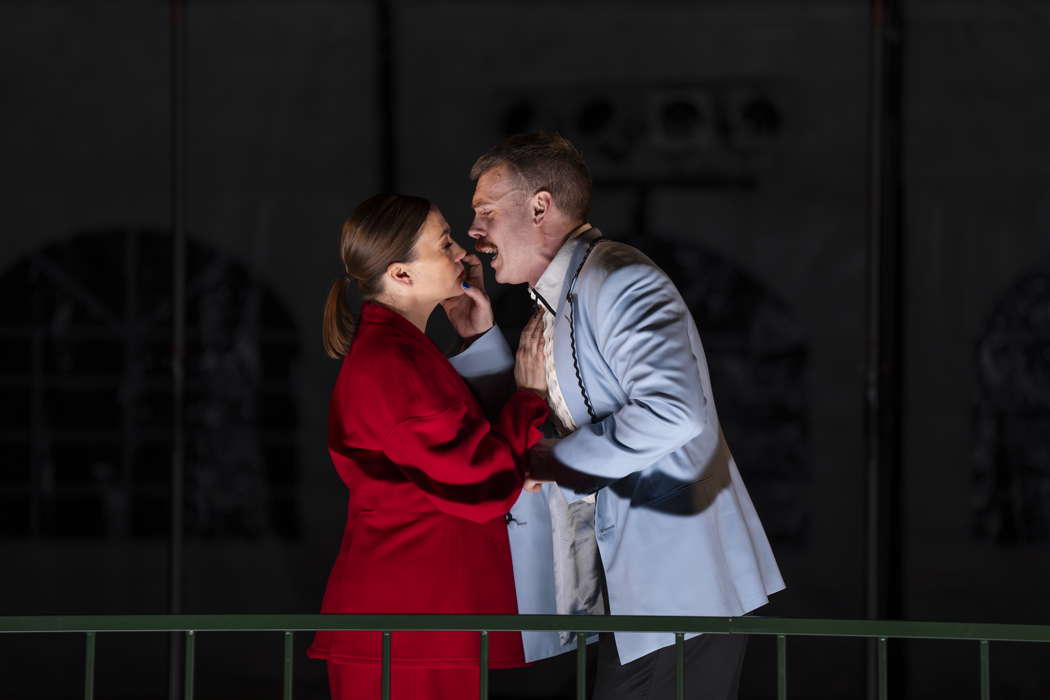
Rupert Charlesworth as Lord Darnley and Heidi Stober as Mary in ENO's Mary, Queen of Scots. Photo © 2025 Ellie Kurttz
Mary was accompanied sweetly by 'The Four Marys' (Mary Seaton, Beaton, Livingstone, Fleming), her ladies-in-waiting, played by British soprano Jenny Stafford, Scottish soprano Monica McGhee, and British mezzo-sopranos Felicity Buckland and Siân Griffiths. Some excellent talent was on show: I was moved by the singing and the theatricality of the singers and orchestra: bravi tutti.
Copyright © 19 February 2025
Frances Forbes-Carbines,
London UK



